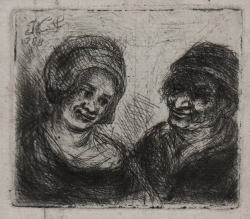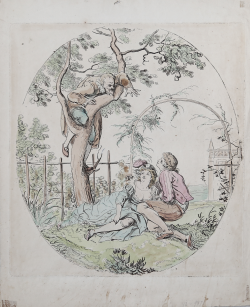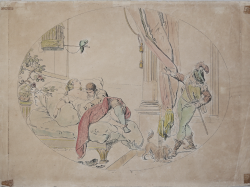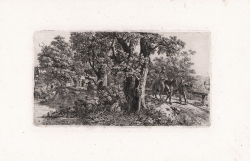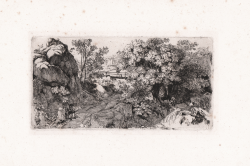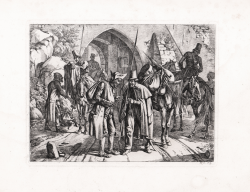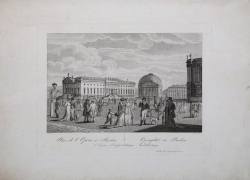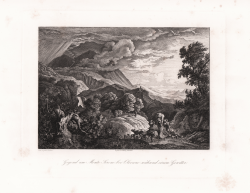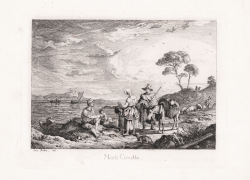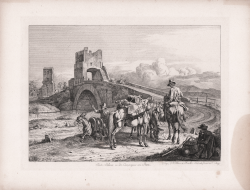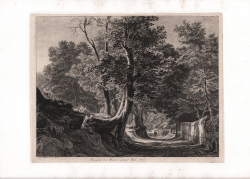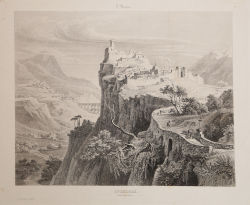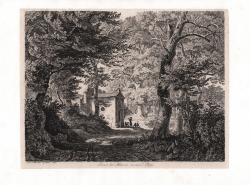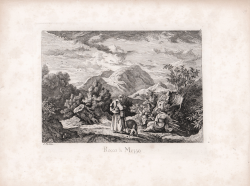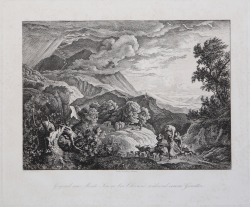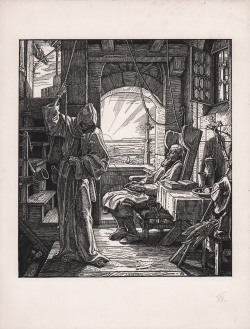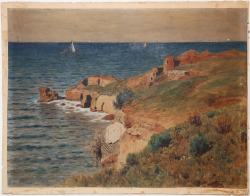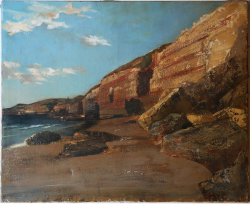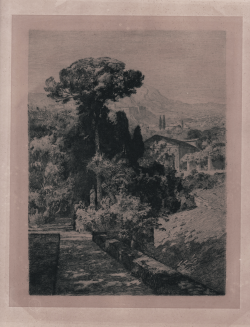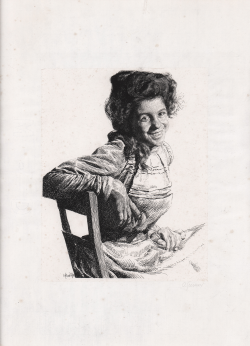Bearded Man Spying on Lovers Under an Arbor
Johann Heinrich RAMBERG
Code:
S7686
Measures:
280 x 310 mm
Year:
1795
The horseman asking for the way
Johann Cristoph ERHARD
Code:
S5526
Measures:
200 x 110 mm
Year:
1816
Landscape at the Untersberg near Berchtesgarden
Johann Cristoph ERHARD
Code:
S5525
Measures:
200 x 100 mm
Year:
1818
Cossack Selling a Watch to an Old Jew
Johann Adam KLEIN
Code:
S42294
Measures:
222 x 170 mm
Year:
1819
Place de l'Opera à Berlin / Opernplatz in Berlin
Johann Heinrich WEISS
Code:
S46786
Measures:
300 x 225 mm
Year:
1820 ca.
Printed:
Berlin
Monte Circello
Adrian Ludwig RICHTER
Code:
S40736
Measures:
203 x 155 mm
Year:
1831
Printed:
Dresden
Ponte Salara in der Campagna von Rom
Johann Adam KLEIN
Code:
S5266
Measures:
275 x 205 mm
Year:
1839
Gegend bei Aricia unweit Rom
Georg Heinrich BUSSE
Code:
CO-914
Measures:
320 x 250 mm
Year:
1841 ca.
Printed:
Rome
Ovindoli, in denm Abruzzen
Georg Heinrich BUSSE
Code:
S29976
Measures:
327 x 255 mm
Year:
1843 ca.
Printed:
Carlsruhe
Schule bei Albano unweit Rom
Georg Heinrich BUSSE
Code:
CO-915
Measures:
320 x 245 mm
Year:
1846
Printed:
Rome
Rocca di Mezzo
Adrian Ludwig RICHTER
Code:
S40735
Measures:
200 x 155 mm
Year:
1848
Printed:
Dresden
Gegend am Monte Serone bei Olevano während einem Gewitter
Adrian Ludwig RICHTER
Code:
S20233
Measures:
287 x 235 mm
Year:
1848
Printed:
Dresden

